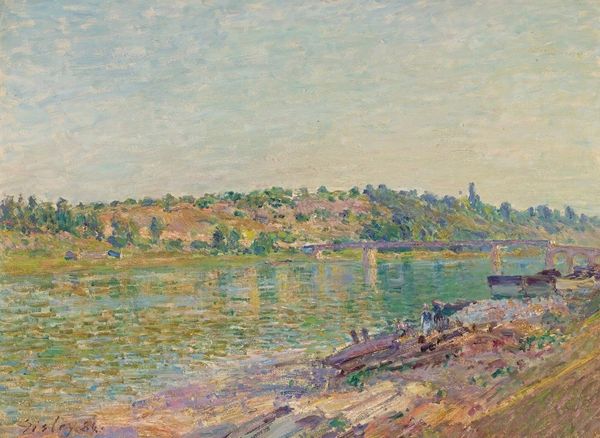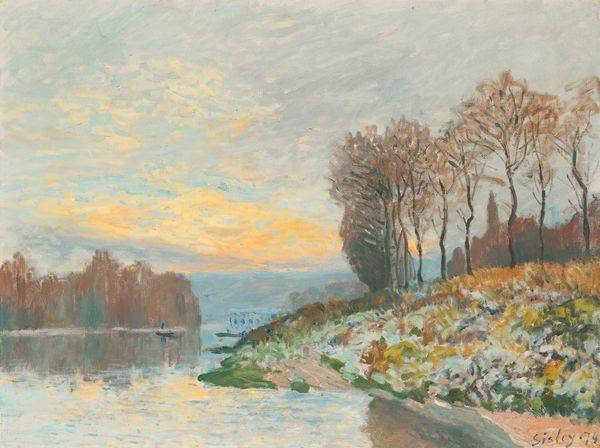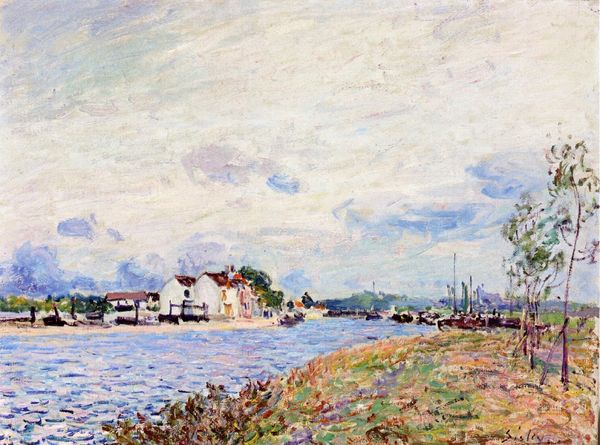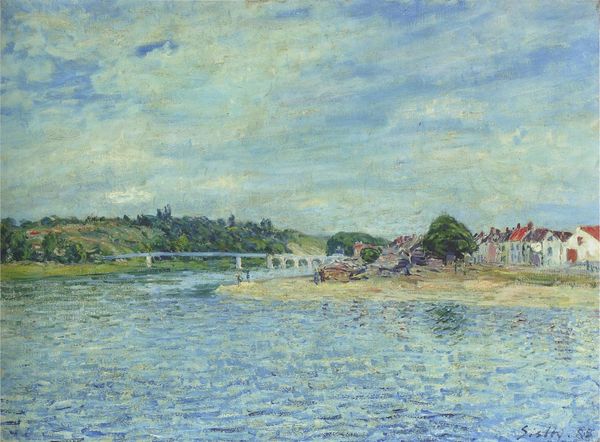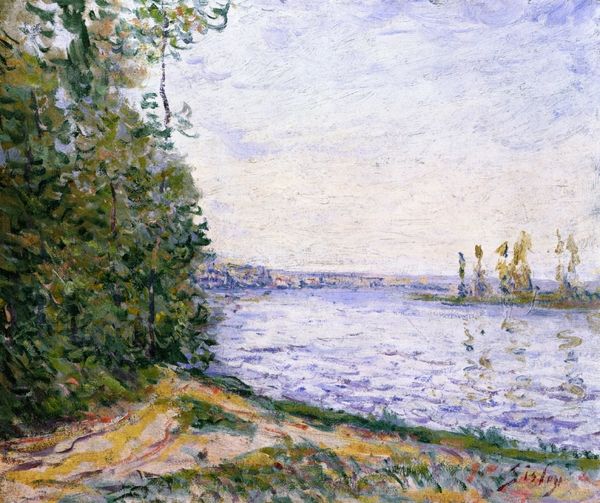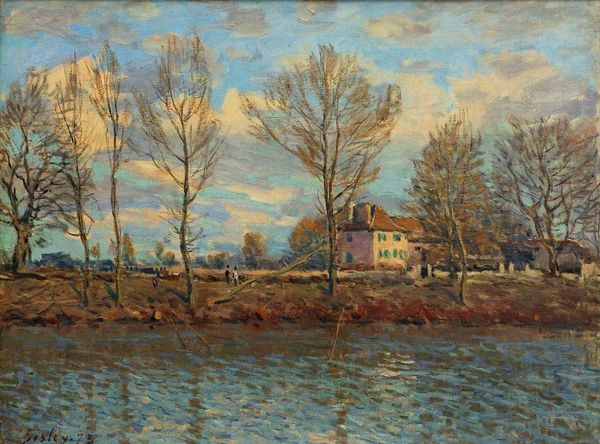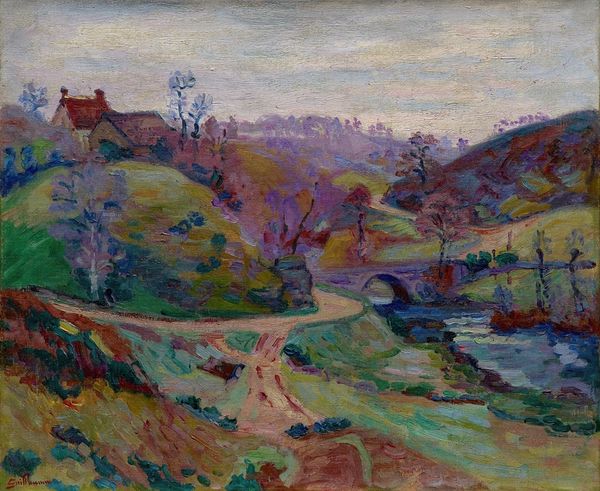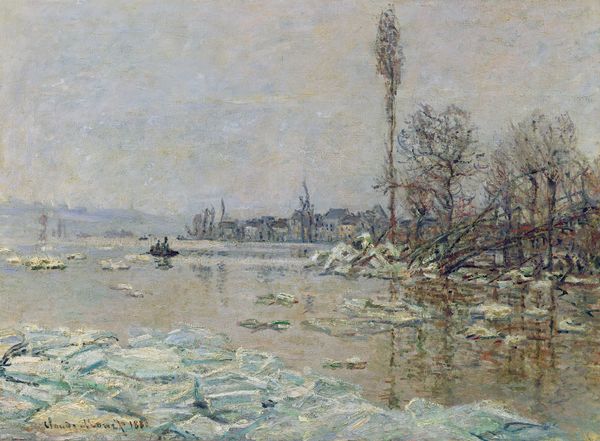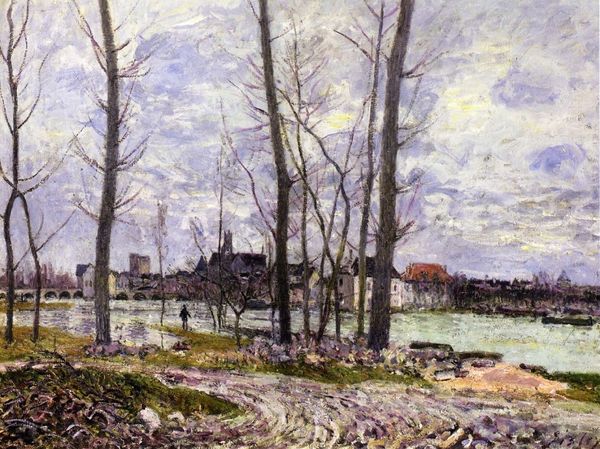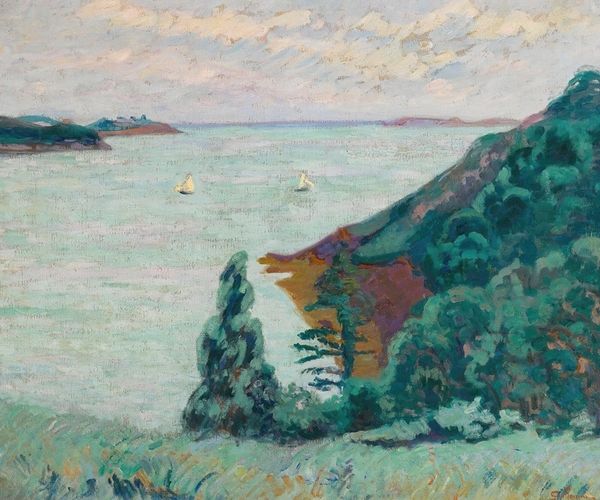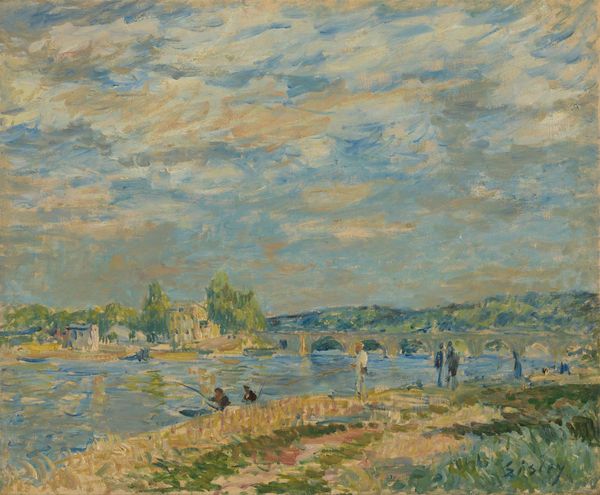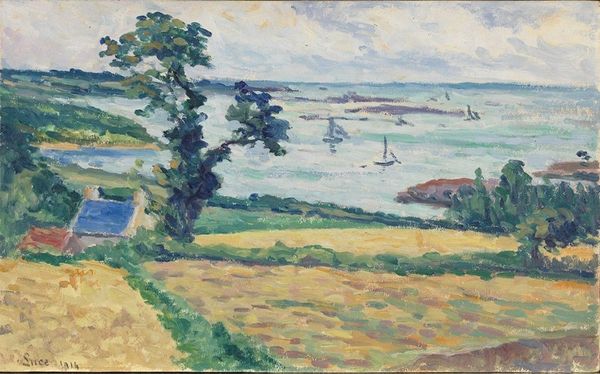
Copyright: Public Domain: Artvee
Editor: So, this is "Barrage De Genetin, Crozant" by Armand Guillaumin, painted around 1898. It’s an oil painting and what immediately strikes me is its stillness, despite all that impasto and broken color. It feels like a quiet, reflective moment. How do you interpret this work? Curator: That feeling of stillness is interesting, particularly when considered alongside the tumultuous socio-political climate of late 19th-century France. Guillaumin, though less celebrated than Monet or Renoir, was deeply engaged in the radical politics of his time. What do you think it meant for an artist with socialist leanings to paint landscapes seemingly divorced from social realities? Editor: Hmm, I hadn’t thought of that connection. Maybe the landscape itself becomes a form of resistance? A space untainted by industrialization and social conflict? Curator: Precisely. Think about the Impressionists' radical departure from academic painting. It was a democratic act, breaking away from established norms. Guillaumin’s choice to paint "en plein air," directly from nature, further democratizes art, making it accessible. What kind of power do you think that holds? Editor: I guess, it’s a move away from idealized landscapes, showing something real. There is also something universal about it. I'm not sure. I would need time to digest that idea. Curator: It’s about locating the revolutionary spirit within the everyday. Consider how capturing fleeting moments in nature offered a respite and a challenge to the dominant powers and academic structures. Art as a mirror and agent of change, wouldn't you agree? Editor: Yes. It’s made me rethink what landscape painting can be. It’s not just pretty scenery but a statement. I'll be approaching paintings quite differently going forward. Curator: Wonderful. Context enriches content, allowing art to breathe within a tapestry of culture and change.
Comments
No comments
Be the first to comment and join the conversation on the ultimate creative platform.

